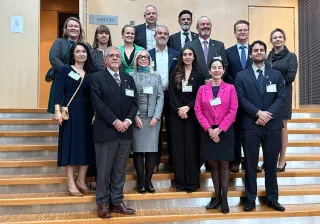According to the Water Poverty Index, developed at the beginning of this millennium, Finland has the world’s highest welfare rate associated with water. In addition to Finland being one of the most water-rich nations in the world; the coverage of water supply and sewerage systems; the use of water in households, industry and agriculture; environmental affairs; and the socio-economic factors related to water supply belong among the best in the world.
The water consumption reflects our industrial structure. Our most important sectors are the water-intensive wood-processing industry and the mining industry, and, therefore, industry is the largest consumer of water (Grön 2010). When communities annually use approximately 460 million m3 of water, in the industry the water consumption is almost 20 times higher: 8,300 million m3 a year. However, the Finnish industrial sector has reduced its water consumption in an exemplary fashion by means of water recycling solutions and by optimising the draining of waste and process waters into the environment. When calculated per product, the pulp and paper industry has reduced its water consumption to one fifth of what it used to be in the 70s. Today, the water consumption of the Finnish brewery industry per product litre is significantly smaller than that of global brewery companies that widely advertise their operations as sustainable.
One key obstacle to water recycling is its relatively low price compared to the prices of comparable recycled materials. However, in water-intensive industries the large volumes of water alone constitute a major cost item. For example, in the Finnish wood-processing industry the cost of water accounts for an estimated 5 % of the overall costs, or is of about the same level as the chemicals and personnel costs.
The recycling of water generates cost benefits and, at the same time, the reduced need to extract water increases options on where to place the plants and offers opportunities for increasing production. In addition to water recycling, the industrial sector is developing solutions for recovery and productisation of substances contained in the water. They can be used for creating new value chains and business models for the future circular economy societies.
Climate change has raised the availability of water as a key risk for the world economy. It has multiple impacts: at the same time as dry areas become even drier, floods and heavy rains become more common. In addition to causing damage to buildings and products, the flooding sewer systems and dams may cause unintentional environmental emissions.
Finland has the best water supply and sewerage systems in the world. Being number one in the world, it would be easy to spring to the world not only as provider of technological solutions, but also as provider of project competence and other competencies that can be associated with water expertise.
Let us pilot the digital solutions, energy efficiency and all aspects of the blue economy in Finland and introduce them to the world markets together, to the regions where access to clean water is already a clear business risk to industrial production!
VTT publishes a policy brief on ensuring the availability of clean water and the opportunities for developing business out of water supply systems.




